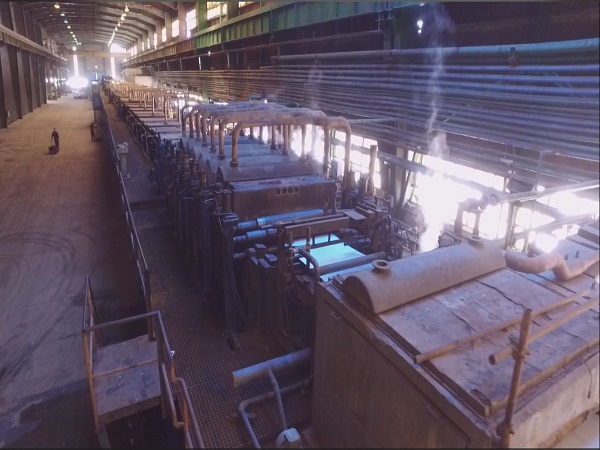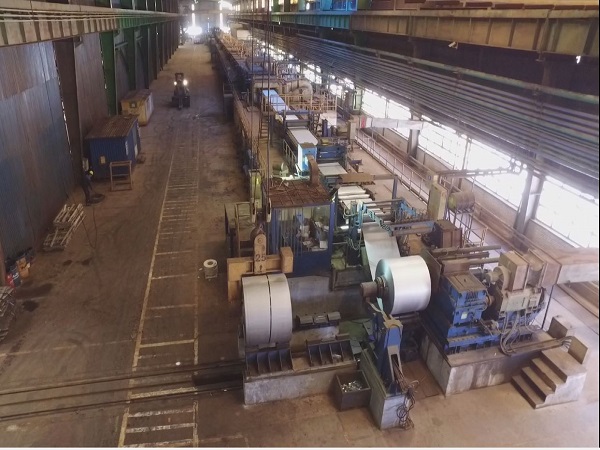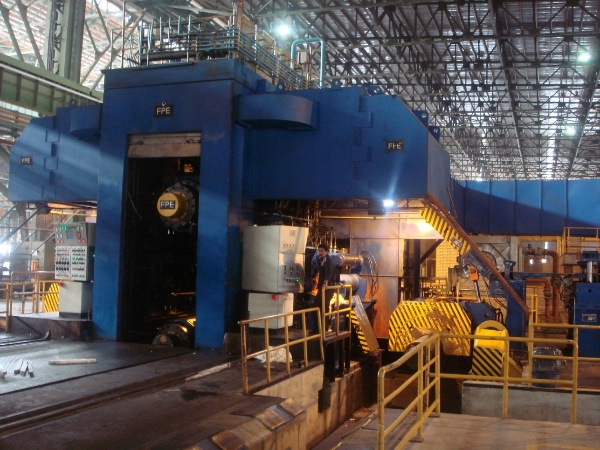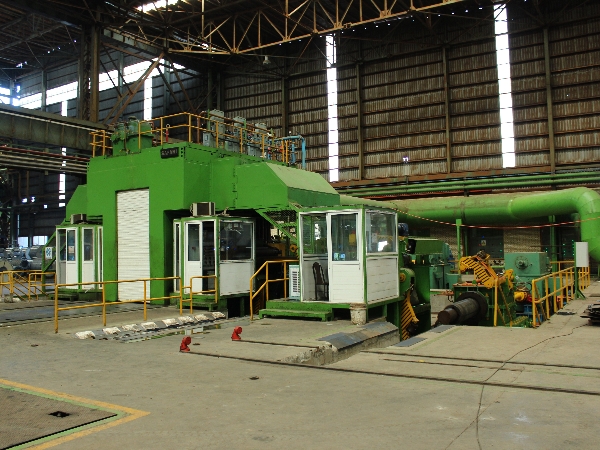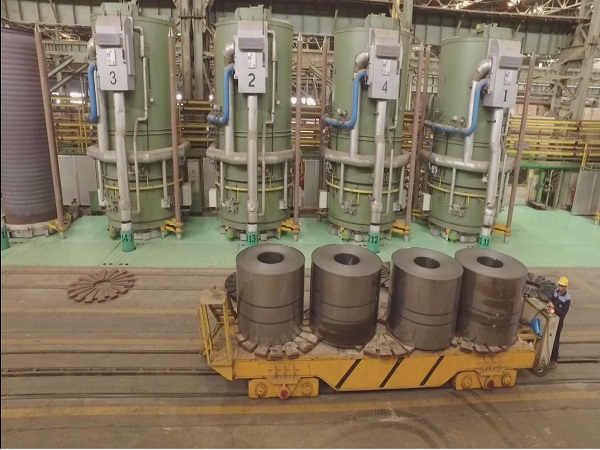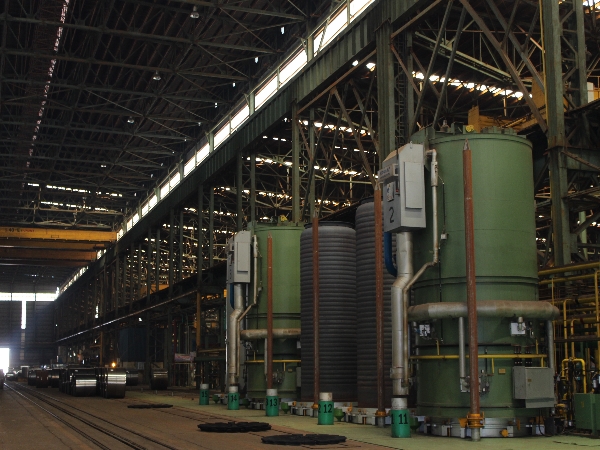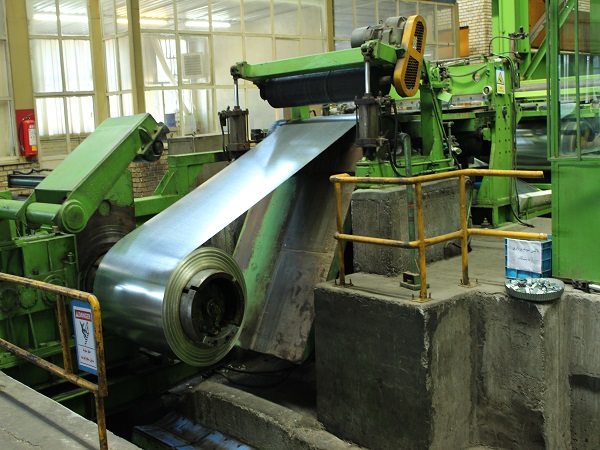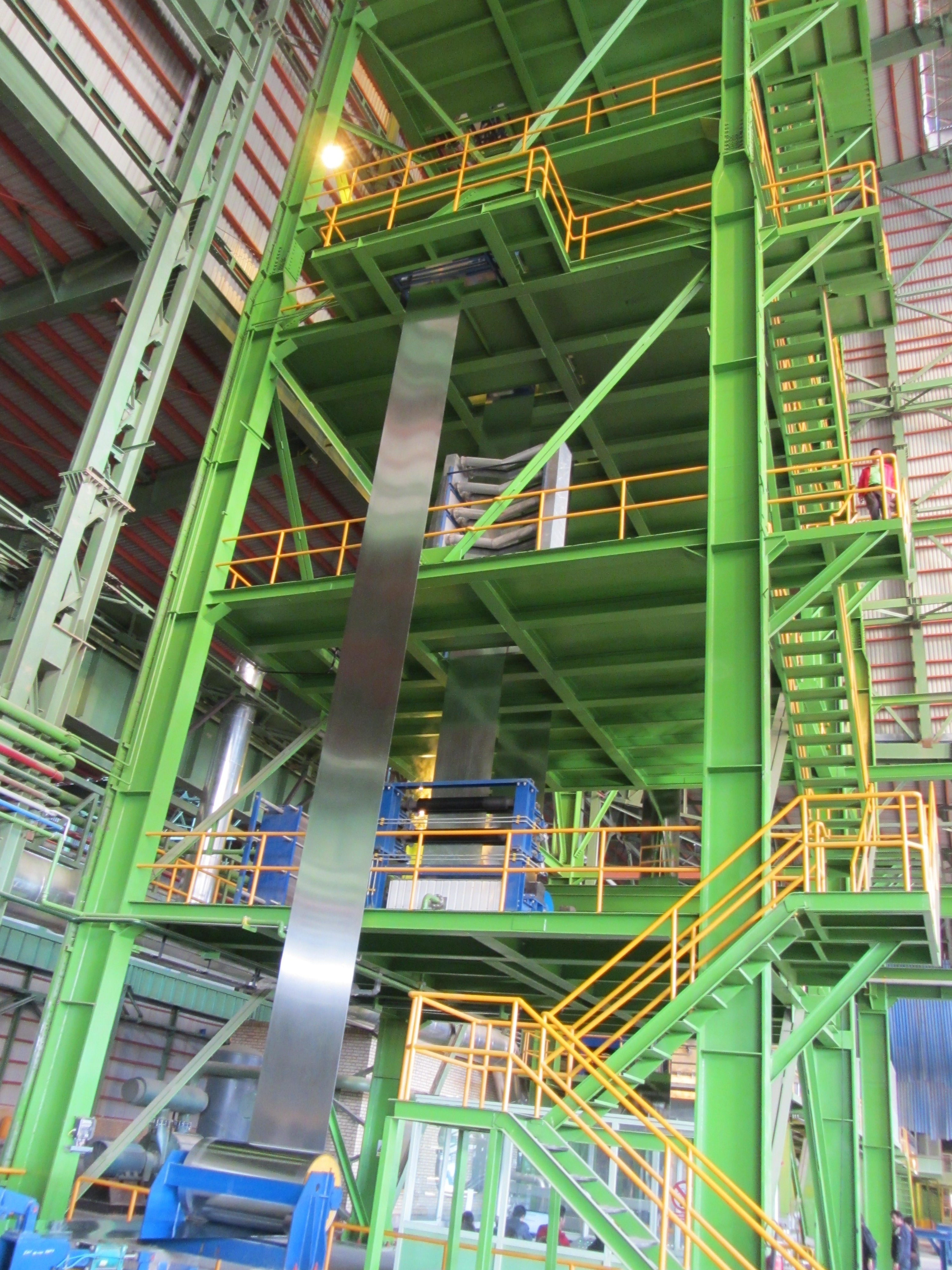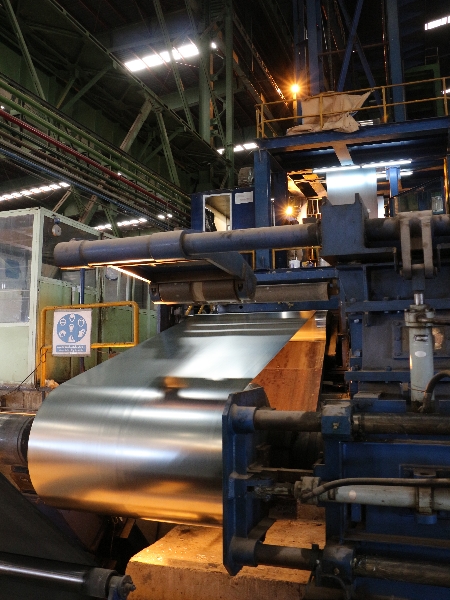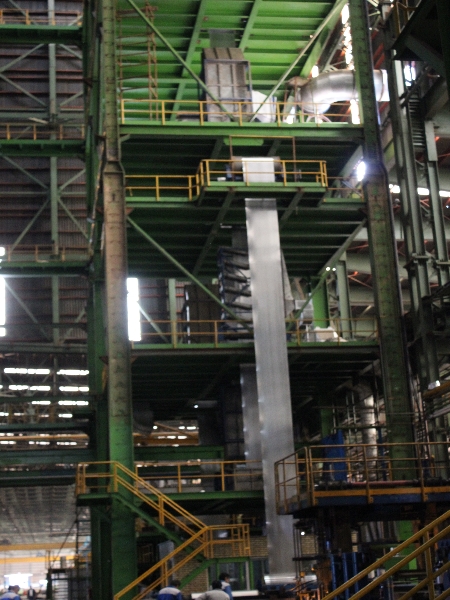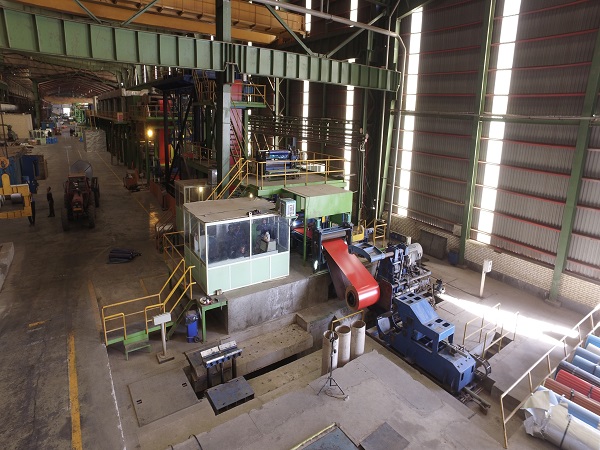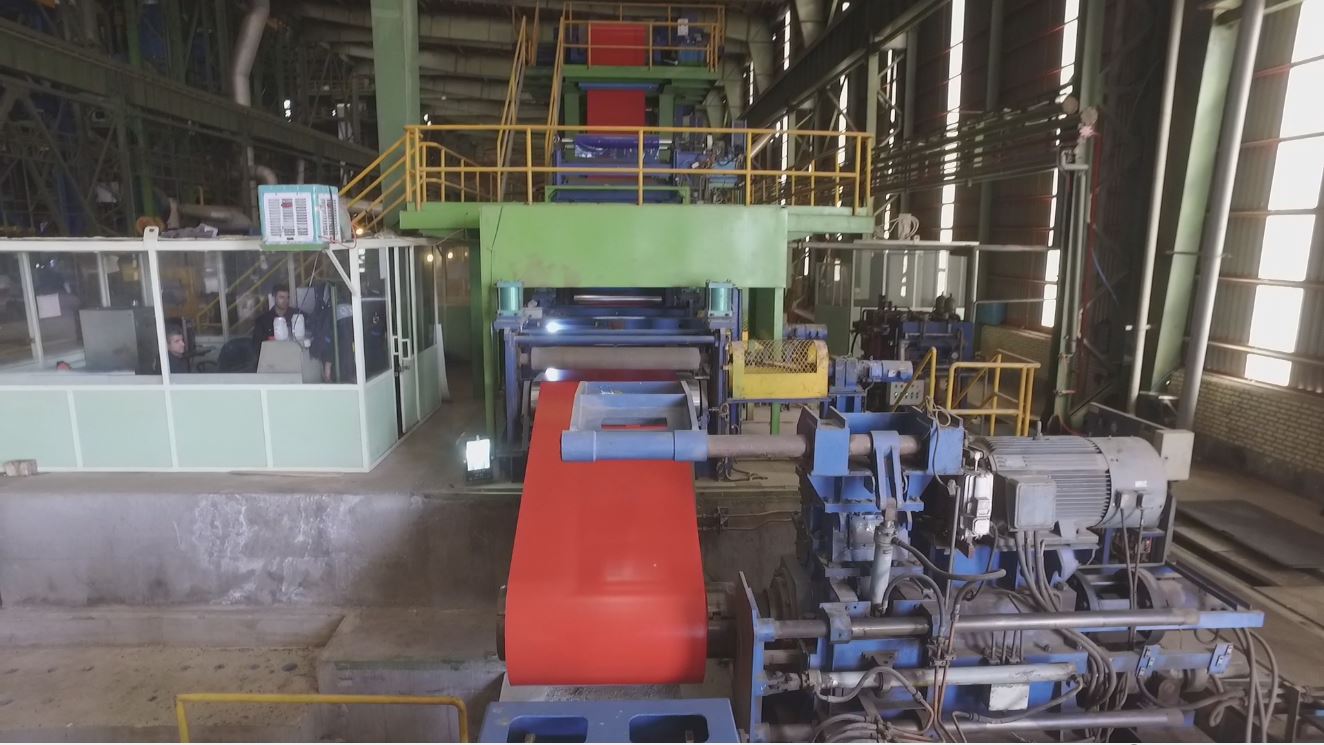The pickling unit of Seven Diamonds Industries Company operates at a capacity of 1 million tons per year. The first step in the production of galvanized and cold rolled steel sheets is the cleaning of the surface, which is carried out in the pickling process. The process is based on conveying the strip through hydrochloric acid baths to dissolve the surface oxides and contaminants.
In the Seven Diamonds industries company, there are two Reverse rolling mills (a 6-high and a 4-high mill stand) with a production capacity of one million tons per year. In this unit, steel is passed forward and backward through a pair of rolls, reducing the thickness incrementally with each pass at the ambient temperature. The cold-rolled products are sent to other lines to continue other processes.
In the seven diamonds industries, two hot-dip galvanizing lines are operating with a capacity of 604,000 tons per year. The cold-rolled sheets enter the continuous annealing furnaces (with a protective atmosphere) after degreasing, and subsequently are coated by passing through the galvanized melting bath. Finally, they are passivated by chromate coating to prevent forming of white rusts (wet storage stains) and improve corrosion resistance.
For the first time in Iran, the Seven Diamond Industries Company exploited the production line of Galvalume steel sheet with the capacity of 360,000 tons per year, in 1396. The cold-rolled sheets enter the continuous annealing furnaces (with a protective atmosphere) for degreasing, and then are coated by passing through the Galvalume melting bath with the composition of 55% aluminum, 43% zinc, and 1.5% silicon. Finally, they are passivated by chromate coating to prevent the formation of white rusts (wet storage stains) and improve corrosion resistance. Galvalume coating protects the steel substrate by combinations of aluminum durability with galvanic zinc protection.
The seven diamonds company’s color coating line is designed to produce high-quality pre-painted steel sheets with a capacity of 200,000 tons per year. In this line, skin passed Galvalume sheets are chromate treated to improve the corrosion resistance and increase the adhesion of the paint to the surface of the sheet. In the next step, the Primer and Back Coat colors are applied to the upper and lower surfaces of the sheet, respectively, and are baked. After cooling, the top coat is applied to the sheet and the final baking is carried out. Finally, a protective film made of polyethylene or polypropylene is applied on the surface of the sheet to prevent paint surface damages.
